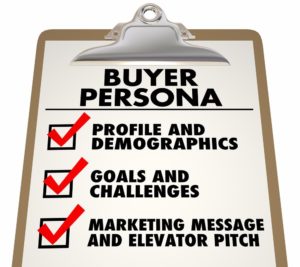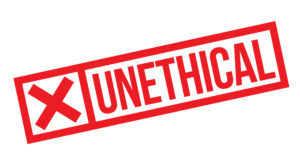On a scale of one to ten, how effective would you say your digital marketing strategy is?
The internet has become the first place where people struggling with substance abuse or their loved ones find options for addiction treatment.

Your digital marketing strategy has to be effective enough to help you connect with potential clients online. Yet, there are so many common digital marketing mistakes drug rehabs make that hinder them from success. You seem to be doing social media marketing, SEO and Google ads but these efforts are not driving the desired results in terms of patient admissions.
Can your addiction treatment facility relate? If so, here are some of the biggest digital marketing mistakes that are holding you back. Don’t worry, every problem has a solution, we’ll also get into how you can avoid each of these mistakes and change your digital marketing efforts for the better.
Let’s dive in!
Common Marketing Mistakes You Should Avoid
1.Creating buyer personas based on your own aspirations
The single most important digital marketing element is understanding your audience. Knowing your ideal client ensures that your content resonates with their needs, interests, and behaviors.
How do you even begin to create buyer personas?

Let go of your biases and do research because this will help you come up with a refined persona. You could conduct a survey using tools such as Survey Monkey or Google Surveys on previous or existing patients.
Some key areas to craft the questions that you need to ask when identifying your audience include:
- Demographics: Age range, gender, level of education, and occupation
- Behavior: What activities are important in their daily lives? Which drug are they addicted to? What other characteristics define their lifestyle?
- Expectations: What is the nature of their addiction? What is important to them? What needs are not being met?
- Decision criteria: What are their strongest reasons for seeking help? Do other people influence their decision process? How quickly can they take action to seek help?
- Meeting their needs: What is unique about your services? How do you stand out from competitors? What can you add to your services to improve their satisfaction?
2. Not aligning marketing goals with patient acquisition goals
Your marketing strategies need to connect your facility with those struggling with addiction by connecting with them on an emotional level. You must realize that your potential clients have so many choices of similar facilities.
To increase patient acquisition, you have to educate and engage potential clients. This is why your marketing goals should shift from just growing your online and social media presence to become a part of your prospective client’s journey. This humanizes your addiction treatment facility and shows you genuinely care about their well being.
One way to do this is by incorporating real-time website personalization. This allows your website to profile a site visitor based on the content they view as well as other attributes such as time on site or number of visits. For instance, if a user visits the medicated treatment section, her interest in looking for treatment options is captured in her profile. Then, your website will start personalizing her experience.
3.Focusing on traffic instead of conversion
Each time we try to market services online, the first impulse is to get more site visitors. However, what truly matters is conversion. After all, converting this traffic into clients is what will keep your addiction treatment facility running.
You can change the wording on your website and phrase it in such a way that it persuades clients to contact you. Another way is to conduct a search on the keywords and focus your efforts on those that are turning visitors into clients. Even simple things such as color and simplifying navigation on your web design can do the trick.
4.Failing to communicate the value your services provide to clients

Most marketing messages tend to focus on the product side of things than the benefits your services offer to clients. For instance, drug rehabs will focus more on details about their therapy services such as relapse prevention therapy, holistic care, and medically assisted treatment.
You must realize that all the client cares about is the positive value your services provide. Not the how it works but how it will help them overcome addiction. Therefore, when you craft marketing materials such as blog posts, show potential clients how your therapy services will make their lives better.
Relapse prevention helps clients stay strong on the road to recovery by offering support systems. Holistic care takes a 360 degrees approach to recovery by taking into account mental health, nutrition, fitness, and meditation. On the other hand, medically assisted treatment helps patients deal with the negative side effects of withdrawal.
When you focus on benefits, it clearly demonstrates the value your services provide and shows potential clients that you are genuinely concerned about helping them overcome addiction. This becomes your competitive advantage as it articulates why people would prefer your services.
5. Writing content that doesn’t convert
Is your content persuasive enough to convert your web visitors into patient admissions?
Some content you create will drive conversions but others will just get lost in the archives. To create content that converts visitors into patient acquisition, you have to put your target audience first.
How do you do that?
By using the buyer’s journey to put yourself in the position of the client you want to speak to and know the type of content that will suit their needs.
The buyer’s journey consists of three key stages including the awareness, consideration and decision stages. Here’s how you can use the stages to write content that converts.
Awareness: Top of the funnel stage
In the Awareness stage, your prospective clients are doing research to identify their problem. Questions may range from why they have constant headaches or how to determine if their substance use is too much. They are looking for educational content to direct them to a solution.
The types of content that work at this stage include:
- Blog posts
- Social media content
- Ebooks
- Infographics
- Video content
Consideration: Middle of the funnel stage
At this stage, prospective clients are looking for information on how to quit drug use. At this point, you’re establishing trust. Potential clients want to know if you’re an expert at helping them kick drug use.
The types of content that can help you achieve this include:
- Expert guides
- Webinars
- Ebooks
Decision: Bottom of the funnel stage
At this point, your potential client has already realized that they have a problem with addiction. They are now trying to decide which addiction clinic is the right one for them. All they need is that final nudge to get them to seek your services.
Effective types of content here include:
- Landing Pages with string CTA’s
- Case studies
6. Failing to clearly define a content production strategy
For your content marketing efforts to truly shine and increase patient acquisition, it must be guided by a clear strategy. This involves creating a master document that focuses on the planning, creation, delivery, and promotion.
Putting this strategy in writing ensures that everyone on your team is on the same page. It makes it easier to determine the types of content to develop, determining who writes your content, how you’ll find content topics, keyword research, and SEO optimization.
You also get to develop a posting schedule, a posting frequency for your content as well as the content promotion channels you will be using. A documented content strategy can also be used to define your content marketing key performance indicators (KPIs).
7. Creating content but failing to market it
Don’t just create remarkable content and then sit back. You understand how you can leverage content promotion channels in order to share your addiction treatment solutions to those who need it the most.
Some of the strategies you could work on to promote content include:
- Guest blogging: this is where you write a blog post on an authoritative blog to improve your online authority. Check out our guest blogging guide to learn how to leverage guest blogging.
- Social media: each social media channel has a unique way of communication. You’ll have to customize your messaging for each channel. Also, take note on the specific time that works best for each channel and use tools such as Buffer or Sprout Social to schedule posts.
- Email marketing: offer web visitors a way to subscribe to your content or updates such as an opt-in form. Remember to personalize your email messages such as including the recipient’s name.
To make your content promotion efforts more organized, include this section in your documented content production strategy.
8. Not honing your drug rehab SEO strategy

It’s no secret that the addiction treatment industry is booming. This has also led to rising of some shady businesses trying to capitalize on unwitting patients seeking help online.
Therefore, Google Ads placed some restrictions on drug rehab campaigns to protect the addiction treatment community and potential clients. This has made drug rehab SEO a key part of your= digital marketing strategy.
To get your drug rehab SEO strategy right, focus on the following tactics:
- Produce long-form content (from 2000 words)
- Optimize your content with long tail keywords-they’re less competitive and have high conversion rates
- Write great title tags, set canonical tags, write excellent meta descriptions, get your HTML headers right and include keywords in your Alt Tags
- Make sure that both the internal and external links provide value to your readers
- Use short and clean URLs
- Make sure your facility has the LegitScript certification if you plan to utilize Google Ads
- Install your SSL certificates
- Take full advantage of Google Search Console
9.Failing to track results
The goal of your digital marketing campaign is to increase patient acquisition. If you fail to monitor how each of your marketing efforts is impacting this bottom line, you could be wasting time and money.
Being able to gauge how well each digital marketing strategy is working helps you to figure out what is bringing you closer to your goals. This way, you can save time and money on what is not working and keep track of what you need to improve to make your marketing efforts better.
To define the marketing metrics that you’ll be using to measure, you can track web content, lead generation process, track new visitors vs returning ones, individual visitors, click through rates, bounce rates, social media effectiveness or even search engine referrals. Great tools for the job include Google Analytics, SEMRush or Kissmetrics.
10. Ignoring the competition
It’s easy to be so focused on your own marketing efforts that you forget to stop and assess what’s going on around you. To successfully differentiate yourself from other addiction treatment facilities, you have to keep tabs on their marketing tactics.
Make it a point to check out their websites and social media pages regularly. This might help you get some ideas on how to better market your facility. Don’t aim to straight up copy your competitors but instead to learn which marketing tactics reach your potential clients most effectively.
Fact is- addiction treatment directories are your biggest direct competitors. It’s hard to search for something about addiction without seeing directory websites. If you’re a small or medium-sized drug rehab facility, it’s hard to go against them. Therefore, you could opt to capture traffic through these sites instead of competing with them.
Leverage tools such as SEMRush to determine the keywords your competition is ranking for. Go to their site and look at the most popular content on their page. Find the topics with a high level of shares and comments. You could use BuzzSumo to find the most shared content by using your competitor’s URL.
Run social media audits on your competition in all of their accounts. For instance:
- Facebook:
How many likes do they have on recent posts?
How often do they post?
Do they use CTAs in their posts?
- Twitter:
How many retweets do they get?
Which hashtags are they using?
What does their bio look like?
- YouTube
What type of content are they posting?
How often do they upload videos?
On average, how many views does one of their videos get?
Unethical Marketing Practices You Should Be Aware Of
This is a hugely concerning issue not only from a business perspective but also for the vast amount of people in need of addiction treatment. Their ability to find the right facility is greatly diminished.
Below are the unethical marketing practices that harm your marketing efforts.

Lead selling
Lead selling involves paying brokers a kick-back or per head fee for referring patients to their addiction treatment facility. This doesn’t just happen with new patients but it could also be agreements between two separate treatment centers.
Misrepresentation of services
Some addiction treatment facilities misleading program information such as describing treatment approaches they do not even offer. Some claim to provide services covered by insurance when in reality patients need to pay cash.
Other rehabs generate fake reviews that reflect them in a positive light, suppress the negative reviews or even generate fake reviews about their competitors.
Google maps hijacking
Some drug rehabs circumvent the Google maps process and lie about their actual location.
Some take this further by going into their competitor’s Google listing and changing contact information to their facilities.
HIPAA non-compliance
Some addiction treatment centers use a patient’s health information including the treatment plan and diagnosis for marketing purposes. When this is done without the patient’s consent, it is a violation of HIPAA’s privacy protection laws that work to safeguard sensitive health information of the patient.
Conclusion
Even if you discover that you have been a victim of one or most of these digital marketing pitfalls, it’s not the end of the road. Resuscitate your marketing by simply correcting your course and move forward.
Have you experienced any bumps in your journey to effective marketing? Feel free to share your experiences or questions in the comments section below.
Of course, if you need any help with any digital marketing mistakes, do not hesitate to contact me directly. I’d be happy to help you experience greater results and attract more patients to your facility.
